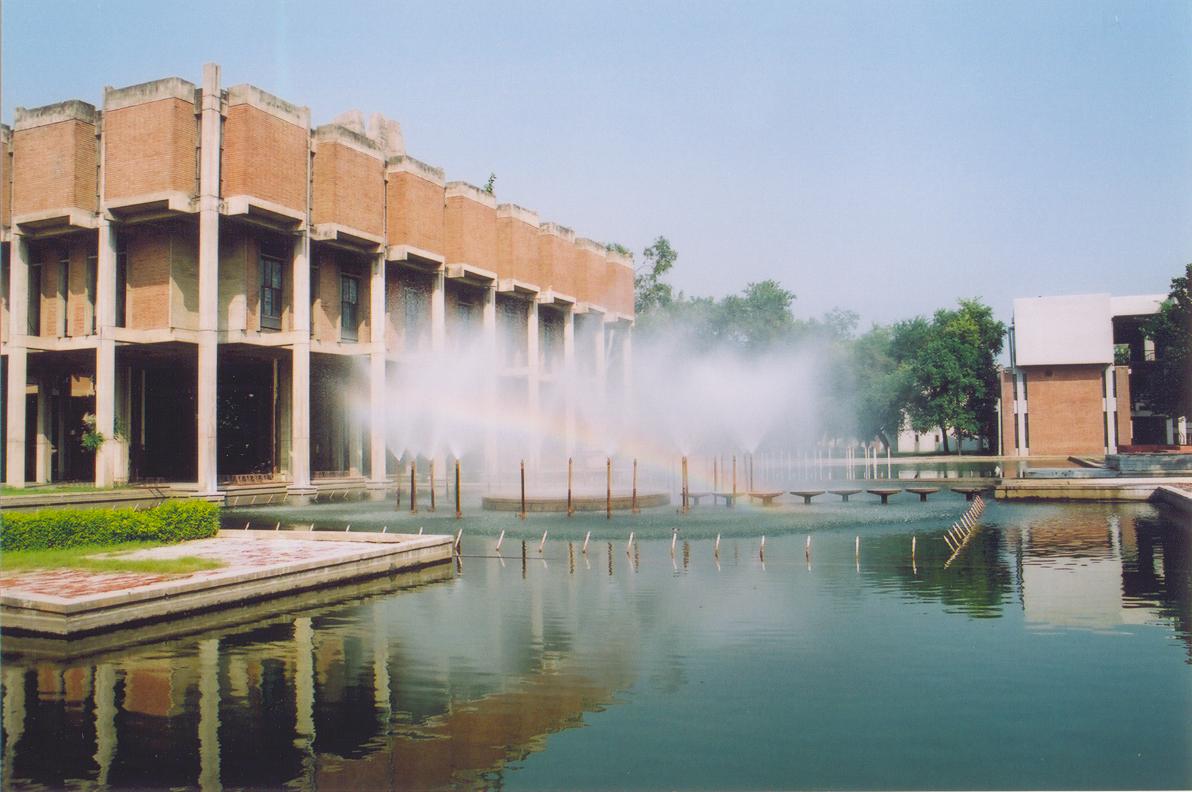Six engineering institutes in India are being loaned over Rs 2,066 crores for research and infrastructure projects by a finance company established by the Union government for this purpose. These include the Indian Institute of Technology Bombay (in Mumbai), Madras (Chennai), Kharagpur (in West Bengal), Kanpur (Uttar Pradesh) and Delhi, and the National Institute of Technology, Suratkal (in Karnataka).
With the loans, IIT Kanpur can finally get its four-year-old plan of building new lecture halls and laboratories off the ground. IIT Delhi will add two hostels and one central research facility. IIT Madras, too, will build more hostel rooms and academic buildings.
What some of the institutes are less sure about is how they will repay their loans.
This is the first time centrally-funded public institutions are being asked to take loans instead of relying on government grants, and it seems some of the misgivings students had about this making education in these institutes more expensive are about to be confirmed.
Repayment strategies
The institutes are expected to repay the principal amount of the loan in annual instalments over the next 10 years using its “internal accruals” or internal revenues. The government will repay the interest component.
To be able to do this, authorities in IIT Delhi are exploring ways to increase internal revenues, including the possibility of reducing the subsidy the institute provides for hostels as well as tuition.
Their counterparts at IIT Kanpur are reluctant to raise the fees for postgraduate studies but the institute does not generate enough funds internally to repay the loan amount and still run comfortably. It intends to request the Ministry of Human Resource Development to increase its annual plan allocation so that government grants can be used to pay the loan instalment. This will effectively convert the loan into a grant.
The Indian Institute of Technology, Madras, has seen a rise in its fee income after the fee was hiked last year from Rs 90,000 per year to Rs 2 lakh, and says it will be able to repay the Rs 300-crore loan it has applied for with this income.
The institutions had not been officially informed by the ministry about the approval of their loan applications when Scroll.in spoke to their representatives. However, the ministry had announced the total amount sanctioned through an official statement on November 29. The finance company has approved loans worth a total of Rs 1,028.73 crores for 16 research projects and Rs 1,038 crores for 11 infrastructure projects across the six institutes.
Scroll.in sought details of the projects and plans for repayment from each of the six institutions. Only IIT Delhi, IIT Kanpur and IIT Madras responded.
The loan route
The plan to wean public institutions off public funds was announced in the 2016 budget. In February, the Ministry of Human Resource Development signed a memorandum of understanding with Canara Bank, and the finance company – christened the Higher Education Funding Agency – was registered in May, with the government contributing Rs 250 crores as equity and the bank, Rs 50 crores. The Reserve Bank of India granted the body a license to operate as a non-banking finance company on November 21.
The agency will invite the private sector to invest in it. It has targeted a corpus of Rs 20,000 crore and plans to give loans to institutions from this pool.
To be eligible to receive loans from the agency, an institution will have to escrow or commit to it a fixed sum – approximately 10% of the loan amount – from its income at the beginning. The credit limit available will depend on this sum.

‘Internal revenues are not surplus funds’
The engineering institutes have long maintained that their internally earned resources, which the government now expects them to use to repay their loans, are not surplus funds.
“The internal revenues are pumped back into the institute,” explained M Balakrishnan, deputy director, IIT Delhi. “The government operational grants are inadequate for operational expenses and thus internal revenue supplements to meet the expenses.”
According to the institute’s last available annual report, IIT Delhi generated Rs 85.8 crores as internal revenue over 2015-’16. The report also says that this contributed to a fifth of the institute’s running costs. It says: “The institute generated about 22.81% of the actual recurring expenditure through internal revenue generation including fees, sponsored research, consultancies and continuing education programmes.”
Manindra Agrawal, acting director at IIT Kanpur, was also concerned about the expectations made of the institute’s internal revenue. “We have sources of revenue but those are already factored into the budget payment,” he said. “We have asked [the government] to not consider the internal revenue [while making allocations] but it does.”
In 2015-’16, the last year for which an annual report is available for IIT Kanpur, the institute had reported an “operating income and almost matching operating expenditure of about Rs. 800 crore” and “a modest operating surplus of about Rs 5 crore, made possible by surpluses generated by R&D [research and development] activities, GATE [Graduate Aptitude Test in Engineering for admission into the post-graduate programmes] and JEE [Joint Entrance Examination] offices, and visitors’ hostel [fees].”
IIT Delhi: To cut costs
Balakrishnan said IIT Delhi had applied for a loan of Rs 210 crores. This will be used to build two hostels – one each for boys and girls – a central research facility at its campus in Sonipat, Haryana, that will be used for research by all departments, and equipment for this facility. If the entire amount is cleared – the institute does not know if that is the case yet – IIT Delhi will have to commit Rs 21 crores to an escrow account.
It will borrow this amount from an internal “corpus fund” – a nest-egg created with income from conducting the joint entrance examination for admission into the IITs, a variety of donations from alumni, and an earlier scheme of the Union government when it matched the institute’s savings to create a corpus. Still, generating Rs 21 crore every year to repay the loan over 10 years will require the institute to take a relook at the sources of internal revenue generation comprehensively.
“All these years we have depended on government grants without focusing on internal revenue generation,” said Balakrishnan. “But schemes like HEFA [Higher Education Funding Agency] are new to our system and we need to become more sensitive towards expenditure, and also more aggressive in recovering costs incurred on services.”
Balakrishnan said that though the student fee rose considerably last year, the internal revenue did not increase proportionately as considerable fee waivers were provided to needy students. He said a scheme like Direct Benefits Transfer that separately compensates such students directly would have been helpful for revenue generation.
“We have to take a serious look at all the costs,” said Balakrishnan. “We are thinking of revising hostel charges. They are currently subsidised but we may charge what accommodation actually costs.”

IIT Kanpur: Looking at grants
IIT Kanpur plans to use the Rs 391 crore loan it has applied for to build classrooms, laboratories and expand its various departments, including mechanical, civil, aerospace and electrical engineering.
It is counting on government grants to make its annual Rs 39 crore repayment even though the government’s statement on the subject explicitly says that institutions must repay loans taken from income they generate themselves.
Assuming it is granted the full amount it applied for, it will also have to commit over Rs 39 crore now into an escrow account. According to its acting director, Manindra Agrawal, the institute will pay that from the plan government grant received.
IIT Kanpur cannot repay Rs 39 crore every year for a decade without government assistance, he said. “We do not want to increase the fees for postgraduate programmes because we want to encourage students to join them,” he added.
IIT Madras: Fee income
The loan taken by IIT Madras will be used to expand infrastructure like accommodation for students and academic buildings. But in this case, the annual Rs 30 crore repayment will come from fees. “The escrowed amount is entirely from the increased fee income,” said Bhaskar Ramamurthi, director, IIT Madras.
Ramamurthi added that the institute may take loans in the future as well “since fee income is still increasing as new batches come in and old batches paying the lower fee graduate”.
He said: “[The Higher Education Funding Agency] uses the fee income at the IITs….Nobody will disagree that the fee income is guaranteed and stable and as sure as sunrise as long as IITs run.”
‘Funds upfront a good thing’
Despite the varying approaches to repayment, all three IIT directors Scroll.in spoke to see the new avenue of funding as an advantage. Agrawal thinks it is an “excellent initiative” because the institute gets the full amount it needs for a project fast. “Earlier, you would never get such large amounts upfront as the government grant was never enough and you would have to save for years,” said Agrawal. “Now you can start setting your plans in motion at once.”
Ramamurthi agreed. “The loan will ensure that the entire required infrastructure is created in a two-to-three-year period,” he said. “Typically, when such buildings are built using annual grants, the time taken is much longer as the annual capital grant is not enough to start all the buildings simultaneously…The pace of construction was tailored to the grant available.”
In Balakrishnan’s view, the new system encourages the institutes to “think big”. “In the past, whatever the government gave, we spent,” he said. “We did not make very ambitious plans. The message is clear that the old days of just relying on grants are over and this is now forcing us to think differently. I think this is the right approach and can be the foundation for all types of [development].”
He said that the new thriftiness in IITs will not restrict access for students who cannot afford the fees. “All our schemes will have enough safeguards for those who cannot pay as equal access is key to public education and we strongly believe in it,” he said.
[“Source-scroll.in”]





